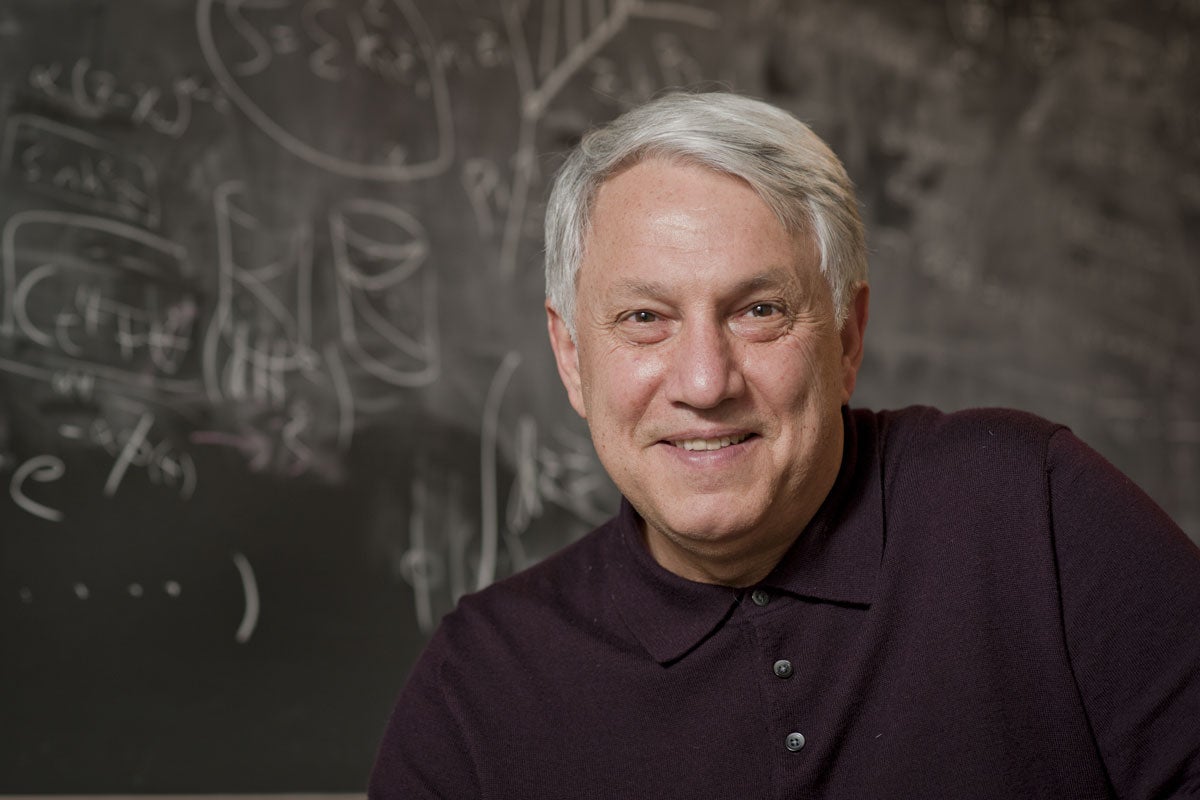From the earliest human civilizations, people have looked to the heavens and pondered the origins of the stars and constellations above. Once, those stories involved gods and magical beings. Now, there’s science, and a large research enterprise focused on understanding how the universe came to be.

Professor Andrei Linde is among the physicists responding to a recent media story taking aim at inflationary theory. (Image credit: L.A. Cicero)
Squarely in the center of this research enterprise is what’s known as inflationary theory. It argues that the universe was born out of an unstable, energetic vacuum-like state then expanded dramatically, spinning off entire galaxies produced by quantum fluctuations. This theory was proposed in 1980 by Alan Guth, presently at MIT. A year later, this theory was improved and extended by Andrei Linde, Stanford professor of physics, who has spent a lifetime modifying and updating it as new data emerged.
During the last 35 years, many predictions of inflationary theory have been verified by theorists and confirmed by cosmological observations. Gradually, this theory became a generally accepted description of the origin of the universe. So imagine Linde’s surprise when Scientific American published a story in February by Paul Steinhardt, a professor of physics at Princeton, and his colleagues declaring its demise.
In response, Linde and Guth, along with their colleagues David Kaiser from MIT and Yasunori Nomura from the University of California, Berkeley, have written a letter defending the inflationary theory, published in Scientific American May 10. It was signed by 33 academics who read like a Who’s Who of theoretical physicists, including Stephen Hawking of Cambridge University. In it, they take aim at the primary argument in the story: that inflationary theory isn’t really a scientific theory because it doesn’t predict anything and therefore can’t be tested.
“As the work of several major, international collaborations has made clear, inflation is not only testable but it has been subjected to a significant number of tests and so far has passed every one,” the group wrote.
A flat universe
As one example, the inflationary model had predicted that if the universe is ever expanding, it would now be flat rather than open or closed. (Imagine a balloon growing infinitely large. Eventually its surface would appear completely flat.) A flat universe would be represented by a variable called Omega that is equal to 1, “Well, plus or minus a little bit because of quantum uncertainty,” Linde said.
In fact, in the mid-’90s many astrophysicists believed that the universe was actually not flat, with an Omega closer to about 0.3. “That would be a disaster for inflation,” Linde said. He then tried to find the flaw in his own theory. However, all attempts to construct a model of inflation with Omega equal 0.3 were unsuccessful; the proposed modifications of inflationary theory were extremely complicated and unnatural, and most of them simply did not work. Fortunately, in 1998, a series of cosmological observations revealed the existence of dark energy. It turned out that the energy of a vacuum is not zero, as previously thought, and Omega was restored to 1.
“If inflationary theory can’t predict anything, why could it appear to be dead when a prediction turned out not to be true?” Linde asked. And how could it be restored by new data that validated the prediction?
A tense time
A similarly dramatic situation emerged five years ago, when rumors circulated about a fairly technical issue that’s known as the Gaussianity of inflationary perturbations. The main thing to know about Gaussianity is that the discovery of a large non-Gaussianity of a specific type would rule out 99.9% of the existing inflationary models.
In 2012 and winter 2013, there were persistent rumors that this non-Gaussianity would soon to be reported by the Planck satellite, and in fact preliminary data by the WMAP satellite indicated a possibility of a very large non-Gaussianity. If that had turned out to be true, it could be a crucial blow to the inflationary theory.
However, the Planck data revealed no traces of non-Gaussianity. The very last sentence of the Planck paper describing that data read, “With these results, the paradigm of standard single-field slow-roll inflation has survived its most stringent tests to-date.”
This and many other successful predictions of inflationary theory are undeniable facts, Linde said. “If we trust the arguments made in the Scientific American story, all successful predictions of inflationary cosmology are the result of pure luck, like winning the lottery,” Linde said. “One can do that once, twice, but not this many times. That is why so many leaders of modern physics signed our letter.”
Linde added that the letters section of a popular magazine is not normally where scientific debate plays out. “A long time ago, when I was young and naive, I thought that things like that are impossible in science,” he said. Now, he just hopes people see that the opinions in the story are not shared by many of the biggest names in theoretical physics and observational cosmology.
Linde added that he worries about the younger generation of scientists getting the wrong impression from this story. “I don’t want them to read this article and think that they are spending their time on inflationary theory in vain. But the enthusiastic support that we are receiving makes us optimistic that this is not going to happen,” he said.